The greatest mode of transportation is the funicular, which is a special kind of train pulled by a cable that runs up steep slopes. But trains are great even when they’re not going up treacherous terrain. And in that spirit: here are some of the most ambitious, fascinating, and downright crazy trains that the world has ever seen.
First Stop: Crush, Texas
Back in the late 1800s, most of the land in Texas was pretty sparsely populated and trains were especially critical infrastructure, enabling some level of connectivity in these remote places.
Then, one day in 1896, a temporary town sprouted into existence in a remote part of this wide open state. And for that single day, it boasted the highest population of any city in Texas. It was a single use town built by a major railroad company, designed around a single event in which two trains would be rammed into each other — on purpose, at speed, and in front of tens of thousands of spectators.
 The “town” was called Crush — and not for the reasons one might expect: it was actually named after the organizer of the event: William Crush, who worked for a regional railroad company. Crush worked for the Missouri-Kansas-Texas railroad, or K-T for short. And so “Crush” became the de facto name of this place that the railroad company built to house the event, which came to be called The Crash at Crush.
The “town” was called Crush — and not for the reasons one might expect: it was actually named after the organizer of the event: William Crush, who worked for a regional railroad company. Crush worked for the Missouri-Kansas-Texas railroad, or K-T for short. And so “Crush” became the de facto name of this place that the railroad company built to house the event, which came to be called The Crash at Crush.
And though it might sound like a strange way to call attention to one’s otherwise (presumably) safe trains, this wasn’t even the first time a railroad company had staged and publicized a crash like this. But at the time, the economy was struggling, and they were looking for new ways to make money. They also had dozens of decommissioned, fifty-ton locomotive engines sitting around and gathering dust.
 It was a bit like a “demolition derby,” except with just two vehicles, and the absolute certainty that neither would win — the winner would be the railroad company, assuming it could turn a profit. Their clever plan was to make the event itself free, then charge people (about $100 in today’s dollars) for round-trip tickets to and from the venue. And because it was so remote, trains were the best way to get there.
It was a bit like a “demolition derby,” except with just two vehicles, and the absolute certainty that neither would win — the winner would be the railroad company, assuming it could turn a profit. Their clever plan was to make the event itself free, then charge people (about $100 in today’s dollars) for round-trip tickets to and from the venue. And because it was so remote, trains were the best way to get there.
They staged the event in a remote spot about 15 miles north of Waco, where there was no town, no infrastructure, basically: nothing at all except that this particular spot formed a kind of natural amphitheater. To accommodate attendees, they had to drill water wells, build a circus tent and a grandstand, organize catering and hire a few hundred police officers to keep order. And they had to lay down tracks for the arriving passenger trains, plus the trains that would crash into each other. Organizers were expecting something in the range of 25,000 people, but by some estimates as many as 40,000 showed up.
There were, of course, safety concerns — but the engineers assured everyone that it would be safe, because the crowd would stay far back from the point of impact. So the trains were carefully brought together to meet in the middle to create a photo op for journalists. And then they were backed up a couple of miles to their starting points, and began building up toward their target speed of 45 miles per hour.
Everything seemed to be running smoothly, but the situation very quickly (and quite literally) went off the rails when both boilers unexpectedly exploded as the trains collided. Huge chunks of metal and wood were blasted up into the air, then began raining down on the crowd. Three people were killed and a photographer from Waco, who nonetheless got some really great pictures, lost an eye.
Initially, as one would expect, onlookers screamed in terror and fled the debris, but as the dust settled, many quickly turned around and rushed to the site to take pictures and souvenirs. Those who were injured were compensated, as were the families of the deceased — though some of that compensation came in the form of lifetime rail passes, which might not have been the most thoughtful option, given the circumstances.
As for William Crush: he was essentially fired on the spot, but then rehired a day later after the railroad realized that the press coverage wasn’t as bad as they had expected. Despite the tragedy, The Crash at Crush turned out to be a really good marketing campaign after all. And for decades to come, staged train crashes remained popular at state fairs and carnivals around the country.
Meanwhile, Crush itself was such a sensation that it even inspired the “King of Ragtime,” pianist Scott Joplin, to write a song about it
He called it The Great Crush Collision March. Joplin even made notations in the composition for other musicians, explaining how to replicate crashing train sounds with music. Today, the temporary “town” of Crush is long gone, but the song remains, as does a plaque located near the site of the event, dedicated to The Crash at Crush.
Next Stop: Rome, Italy
When you think of Rome, famous ancient buildings and ruins generally come to mind – like the Colosseum, the Pantheon, the Roman Forum, and so on… but those are just the tip of the iceberg. The whole city is a treasure trove of historical artifacts. And tourists only see some of them, in part because so much history is buried below the surface. But this rich history has a side effect: it has made things really hard for urban planners who are working to expand the city’s Metro network.
 For the most part, the horizontal tunnels are relatively deep, so they don’t cause many issues — it’s the tunneling to get down there, and the building out of stations, exits, and ventilation systems near the surface, where planners run into problems. These excavations often become de facto archeological digs. In at least one case, the city abandoned a planned station entirely for preservation reasons. Because of these challenges, projects that might otherwise take a few years can be drawn out into decades-long endeavors, and their costs can skyrocket. Also, specialized construction workers are often needed who are trained in archeology so they can watch for (and know how to handle) historical finds.
For the most part, the horizontal tunnels are relatively deep, so they don’t cause many issues — it’s the tunneling to get down there, and the building out of stations, exits, and ventilation systems near the surface, where planners run into problems. These excavations often become de facto archeological digs. In at least one case, the city abandoned a planned station entirely for preservation reasons. Because of these challenges, projects that might otherwise take a few years can be drawn out into decades-long endeavors, and their costs can skyrocket. Also, specialized construction workers are often needed who are trained in archeology so they can watch for (and know how to handle) historical finds.
But sometimes, these workers encounter incredible things. Not too long ago, for example, they found a whole building complex dating back to the second-century reign of emperor Hadrian. It was filled with marble floors, ornamental, mosaics painted frescoes, and more — and most of what was uncovered was surprisingly intact.
But there’s a silver lining, at least, because a lot of these sites wouldn’t be excavated at all if it weren’t for the city’s push to expand public transit. So in a way, historians do benefit from uncovering all kinds of stuff that might otherwise have just stayed buried indefinitely.
Announcement: The Dining Car is Now Open
As a building type, diners are striking — long and thin, with chrome accents and rounded corners. Inside, their narrow spaces allow just enough room to walk through and sit down.
In a built world of taller and deeper structures, made of stone and brick and steel and glass, diners seem odd. But if you understand where they came from, all of their curious design features suddenly make sense.
Diners are an evolution of dining cars — the ones found on trains. And it’s not just their name and aesthetic that traces back to railways: many diners were prefabricated as modular units, and specifically designed to be taken by truck or train to their final destination, which in turn constricted their dimensions, resulting in the long and narrow layout.
Entrepreneur Jerry O’Mahony is widely credited with coming up with the ‘diner’ as such, building the first one 1913. His creations evolved to have that now-distinctive ‘diner’ look – long and narrow, sleek and curvy with flashy chrome accents. Many vintage prefab diners came complete with counters, stools, tile floors, even restrooms. They were transported to their destination then got hooked up on-site to utilities.![]()
Next Stop: Mae Klong, Thailand
One of the largest fish and produce markets near Bangkok is effectively bisected by a train track. Vendors flank the rail line and the name of the place translates to “Umbrella Pull-Down Market.” The seemingly odd name refers to this very specific feature (or arguably: bug), that fundamentally shapes how this market works. Because those vendors are not set far back from the tracks, as one might imagine — they set up their goods right against the rails on either side.
Shoppers, meanwhile, have to actually walk between the rails where the trains go. When a train approaches, alarms sound so that people know to get out of the way and vendors quickly pull back their wares and they lift up their awnings, hence the name of the market.
There are accidents, but for the most part, they are few and far between. And most of them are fairly harmless, like: a train hitting someone’s wares that got left too close to the tracks, or bumping a table that didn’t get pulled back far or fast enough. Some vendors also have particularly clever solutions, like wheeled carts that are set into little tracks that they’ve created in the pavement — this helps them more quickly and consistently get their things back out of the way.

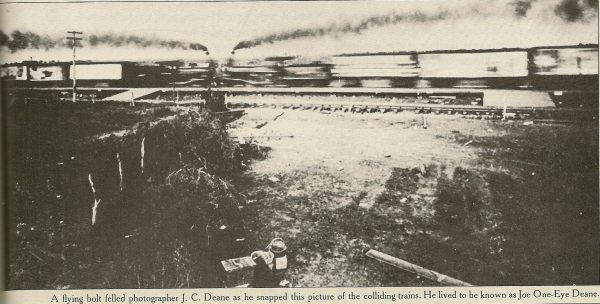

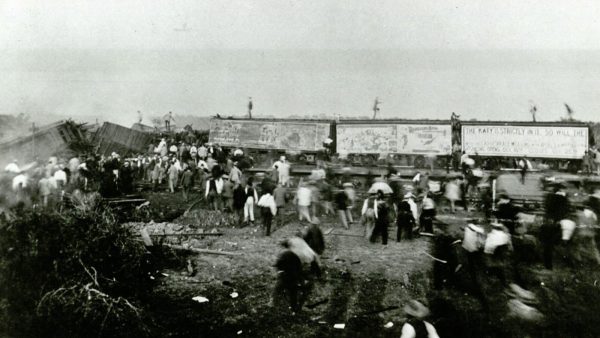

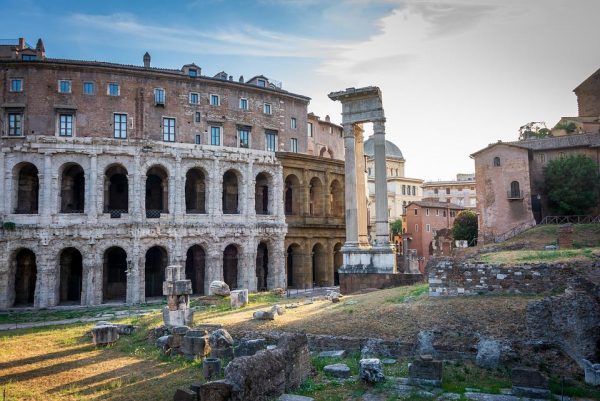
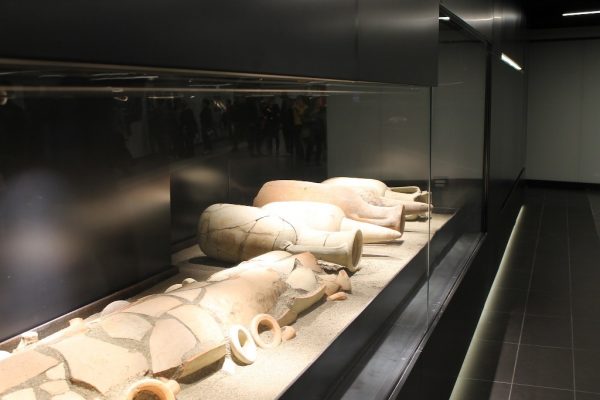
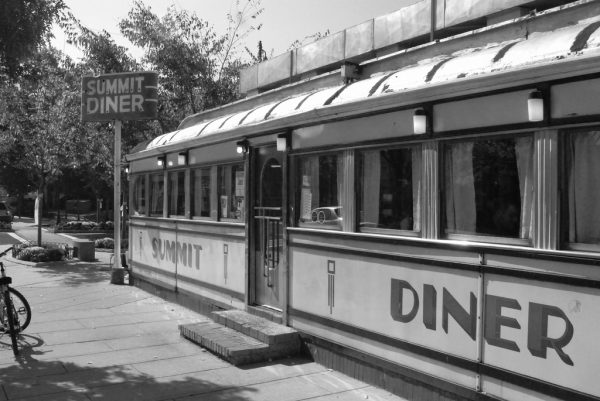
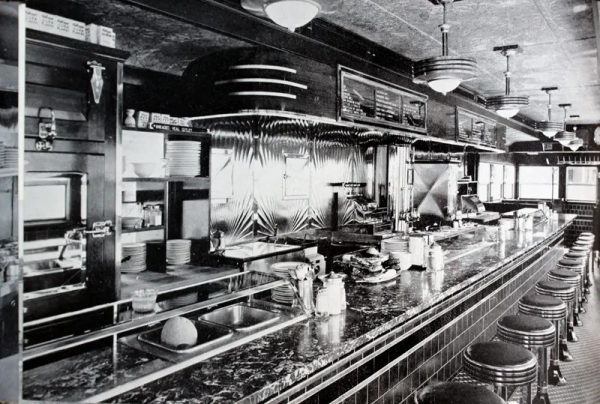
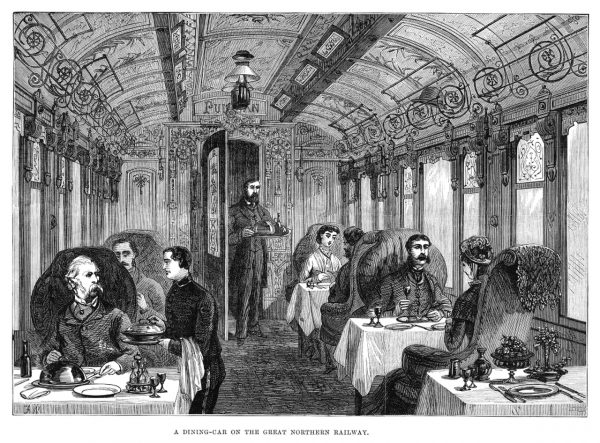
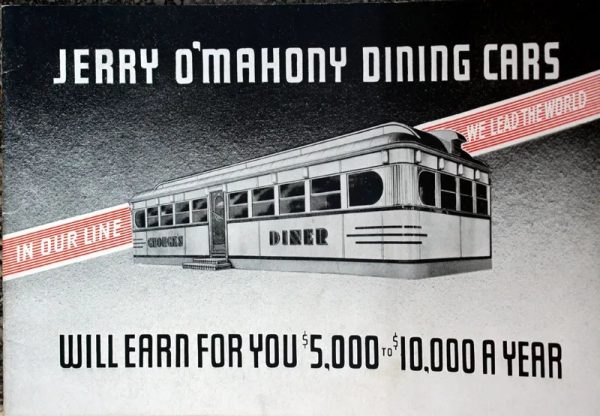




Comments (5)
Share
I love this episode. I have been to the train market in Thailand and it is super-impressive how smoothly the process of pulling the stalls back goes – and they put the stalls back out immediately the train has gone past their bit of the market. The market is near the terminus too so I saw the train driver signal his order to a milk tea shop on the way in, and pick it up as he went past on the way back! It’s not true though that the market was there before the railway line – what happened was that the railway line goes past a market building, but to sell within the market building you need to pay a fee, so some stallholders will set up just outside the market so they don’t have to pay the fee but still get all the customers who are coming to the market. (You see this in markets all over Thailand). Because there are not many trains each day that go to that station, some stallholders must have thought that the land by the tracks was too good real estate to pass up!
Being from northern Germany, and also being a huge Ärzte-fan, this episode made my day ❤️
Ye should do an episode on the role railways played by the colonisers in their colonies. Although Ireland was in theory a part of the UK, it was nonetheless treated as a colony. The Irish catholic populace were believed to be lazy, poor and stupid: a state they had been left in after the enactment of the Penal Laws in the 1690s.
At the turn of the 1900s, Ireland had one of the densest railway networks in the world and this network was designed to bring resources from the countryside to the ports as cheaply as possible.
The purpose of colonies is the extraction of resources for the benefit of the colonisers. It is no surprise that the London government encouraged the building of railways all throughout the British Empaah.
With independence in the 1920s, the following trade war with the UK in the 1930s and the appeal of the motoring car to the individualistic Irish, the majority of the railways lines were torn up at the beginning of the 1960s. There was a lot of hatred towards the railways then and they were removed with an astonishing rapidity. It was time when anything that symbolised the old Protestant past was done away with. The Georgian buildings in Dublin suffered much the same fate. Only lines that were profitable were retained.
While this did may have made financial sense in a poor country as Ireland then, little thought was given to them as a future resource. We have the car, what more do we need?
That’s very interesting. I wonder whether there is a similar lroblem with railway planning here in Australia, another colony of England? Our railways are definitely more likely to go from a coal mine or wheat farm to the docks than from suburb to suburb.
Let me start by saying I’m an architect born & raised in Northern Germany. So I love Kurt and everything he does – with Nordstrandischmoor being top of the list.
I suspect, though, Kurt spent his time in Germany more down South, not up North. otherwise, he’d realize that the lyrics are weird: they keep singing about the island but never mention the name – they mention only the name of the largest city. It’s like Blue Öyster Cult singing about “the island” and the song is called “East Hampton” (quite literally because Sylt is the Hamptons of Hamburg).
More importantly, I think you’ve missed a grand opportunity: we’ve all made the sound of a steam train chugging and the whistle blowing. I was sooo looking forward to Roman emulating that at the end of the episode “stitchetcher stitchicher, eex-eeeeem”